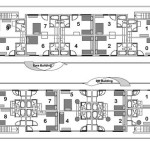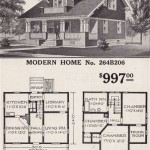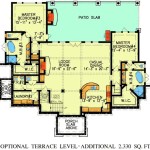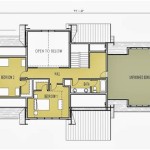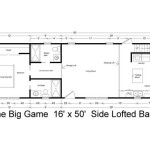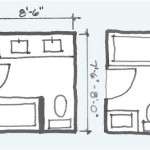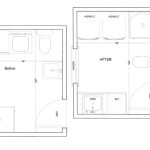Maximizing Space: Exploring 400 Square Foot Home Plans
The increasing demand for affordable and sustainable housing has fueled a growing interest in small-space living. Among the various options available, 400 square foot home plans represent a particularly compelling solution for individuals and couples seeking compact yet functional living spaces. These plans necessitate thoughtful design and careful space optimization to create comfortable and efficient homes. This article explores the key considerations, common design strategies, and advantages associated with 400 square foot home plans.
Understanding the Challenges and Opportunities of Small-Space Living
Designing a 400 square foot home presents unique challenges. The limited square footage demands meticulous planning to accommodate essential living functions such as sleeping, cooking, bathing, and relaxing. Every square inch must be strategically utilized to avoid clutter and create a sense of spaciousness. However, these challenges also present opportunities for innovative design solutions and a more minimalist lifestyle.
One of the initial steps in planning a 400 square foot home is to carefully assess individual needs and priorities. Identifying the essential activities that will take place within the home helps to determine the required spaces and their relative sizes. For example, individuals who frequently cook may prioritize a larger kitchen area, while those who work from home may need a dedicated workspace.
Effective space management is crucial in maximizing the functionality of a small home. This often involves incorporating multi-functional furniture, such as sofa beds, storage ottomans, and folding tables. Vertical storage solutions, such as tall shelves and wall-mounted cabinets, are also essential for maximizing storage capacity without occupying valuable floor space.
Consideration should also be given to the overall layout and flow of the home. An open floor plan can help to create a sense of spaciousness and allow for greater flexibility in furniture arrangement. Strategically placed windows and skylights can also enhance the feeling of openness by bringing in natural light and blurring the boundaries between the interior and exterior.
The choice of materials and finishes can also significantly impact the perceived size and comfort of a small home. Light-colored walls and ceilings can help to reflect light and create a brighter, more airy atmosphere. The use of mirrors can also visually expand the space and create the illusion of depth. In addition, selecting streamlined and minimalist furniture designs can help to avoid clutter and maintain a clean, uncluttered aesthetic.
Key Design Elements in 400 Square Foot Home Plans
Several key design elements are commonly incorporated into 400 square foot home plans to maximize functionality and create a comfortable living environment. These elements often include open floor plans, multi-functional spaces, smart storage solutions, and efficient appliances.
Open Floor Plans: Combining the living, dining, and kitchen areas into a single open space is a common strategy for creating a sense of spaciousness in small homes. This layout allows for greater flexibility in furniture arrangement and encourages social interaction. It also eliminates the need for interior walls, which can further maximize available floor space.
Multi-Functional Spaces: Designing spaces that can serve multiple purposes is essential in a 400 square foot home. For example, a living room can be easily transformed into a guest bedroom with the addition of a sofa bed. A dining table can also serve as a workspace or a craft table. The key is to choose furniture and design elements that are versatile and adaptable to different needs.
Smart Storage Solutions: Adequate storage is crucial in preventing clutter and maintaining a tidy living environment. Built-in storage units, such as bookshelves and cabinets, can maximize storage capacity without occupying valuable floor space. Under-bed storage, ottomans with hidden compartments, and wall-mounted shelves are also effective storage solutions. Utilizing vertical space is key, with tall, narrow storage units being more efficient than wide, shallow ones. Maximizing closet space with organizers and shelving is also crucial.
Efficient Appliances: Choosing compact and energy-efficient appliances can help to save space and reduce energy consumption. Smaller refrigerators, induction cooktops, and combination washer-dryer units are ideal for small homes. Selecting appliances with a sleek and minimalist design can also contribute to a more streamlined aesthetic.
Another important aspect of designing a 400 square foot home is to consider the natural light and ventilation. Large windows and skylights can bring in natural light and fresh air, creating a brighter and more comfortable living environment. Proper ventilation is also essential for preventing moisture buildup and maintaining air quality.
Color palettes play a significant role in the perceived size of a space. Lighter colors tend to make a room feel larger and more open, while darker colors can make a space feel smaller and more enclosed. Neutral color schemes, such as white, beige, and gray, are often a good choice for small homes, as they create a clean and minimalist aesthetic. Accents of color can be added through accessories and artwork.
The use of mirrors can also visually expand a small space. A large mirror placed on a wall can reflect light and create the illusion of depth. Mirrors can also be used strategically to highlight architectural features or to create a focal point in the room.
Advantages of Choosing 400 Square Foot Home Plans
Opting for a 400 square foot home plan offers several advantages, including affordability, sustainability, and reduced maintenance. These factors make small-space living an attractive option for individuals and couples seeking a simpler and more cost-effective lifestyle.
Affordability: One of the primary advantages of a small home is its affordability. The construction costs are typically lower than those of larger homes, as less materials and labor are required. Property taxes and utility bills are also generally lower, making small homes a more financially sustainable option. Moreover, the reduced need for furniture and décor further contributes to cost savings.
Sustainability: Small homes have a smaller environmental footprint than larger homes. They require less energy for heating and cooling, and they consume fewer resources during construction. Living in a small home can also encourage a more minimalist lifestyle, which can further reduce environmental impact. Choosing sustainable building materials and energy-efficient appliances can further enhance the environmental benefits of small-space living.
Reduced Maintenance: Smaller homes require less maintenance than larger homes. There is less space to clean and less landscaping to maintain. This can free up time and energy for other activities. The reduced clutter also contributes to a more organized and manageable living environment. Furthermore, smaller homes often require less renovation and repair work over time.
In addition to these advantages, small-space living can also encourage a more intentional and minimalist lifestyle. Living in a small home forces individuals to prioritize their possessions and to declutter regularly. This can lead to a more simplified and fulfilling life.
The location of a 400 square foot home can also be a significant factor in its overall appeal. Small homes are often located in urban areas, which can offer access to amenities such as public transportation, shops, and restaurants. This can reduce the need for a car and promote a more walkable and bikeable lifestyle.
The design and construction of a 400 square foot home can also be tailored to individual preferences and needs. Prefabricated homes, modular homes, and tiny homes are all popular options for small-space living. These homes can be customized to meet specific requirements and can be built quickly and efficiently.
In conclusion, 400 square foot home plans offer a viable and attractive housing solution for individuals and couples seeking affordable, sustainable, and low-maintenance living spaces. By carefully considering the challenges and opportunities of small-space living and incorporating key design elements such as open floor plans, multi-functional spaces, and smart storage solutions, it is possible to create comfortable and functional homes that meet individual needs and preferences. The growing popularity of small-space living reflects a shift towards a more minimalist and sustainable lifestyle, and 400 square foot home plans are at the forefront of this trend.

400 Square Foot Sun Filled Tiny House Plan 560004tcd Architectural Designs Plans

400 Sq Ft Apartment Floor Plan Google Search Tiny House Plans Small

400 Square Foot One Bedroom Cottage 560009tcd Architectural Designs House Plans

400 Sq Ft Apartment Floor Plan Google Search Small House Plans Tiny

Most Popular Tags For This Image Include Luxury House Plans Bungalow Contemp Guest Small Floor Cottage Style

Cottage Style House Plan 1 Beds Baths 400 Sq Ft 21 204 Plans Cabin Unique

400 Square Foot Sun Filled Tiny House Plan 560004tcd Architectural Designs Plans

Country House Plan 1 Bedrm Bath 400 Sq Ft 141 1076

House Plan 76165 Cabin Style With 400 Sq Ft 1 Bed Bath

Hpg 400 1 The Outdoorsman House Plans

